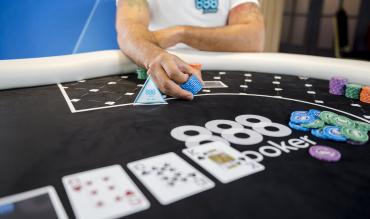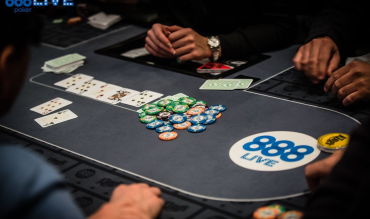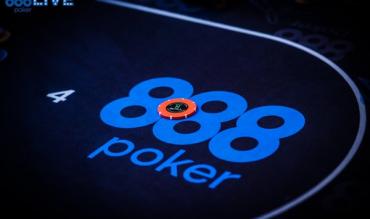Updated on July 13, 2023
The “bubble” refers to the point in a poker tournament when players are about to make the money. For example, if a tournament paid the top 100 players and a few more players that remain – say, anywhere from 1-5 players – they’re on the bubble. If it’s just one player off the money; it’s often referred to as the “stone bubble.”
A lot of players alter their playing style when the action gets nearer to the money bubble. Some tighten up to ensure they squeak into the money while others ramp up the aggression to swipe chips.
When a player bubbles a tournament – they’re often referred to as the bubble boy or girl – it means they’ve gone the furthest in the tournament without getting paid. All that playing and hard work with nothing to show. It’s not a place where players want to be.
The poker bubble is a crucial stage in any poker tournament with many things to consider.
Keep reading to discover seven things you may do to survive the bubble in a tournament and avoided that dreaded bubble boy/girl spot everyone wants to avoid.
1. Short Stack Bubble Strategy
Being short-stacked on the bubble is a big disadvantage. That’s because you can’t play a hand without running the risk of bubbling. As such, many short-stacked players will tighten up and only play the strongest hands, essentially folding their way to the money.
You really must ask yourself what the money means to you and whether you’re there to win or bank a min-cash. If you’re there to win and don’t care about the money, play as you’d like. If making the money is your goal, then the old poker saying “tight is right” is probably the best route for you.
If you are going to play a hand as a short stack, say you’re sitting with 5-10 bb, you should simply move all-in. You don’t have enough chips to be limping/calling just hoping to hit a flop.

Get it in and cross your fingers.
2. Big Stack Bubble Strategy
Having a big stack on the bubble affords you an excellent opportunity to pick up chips. As we said above, short stacks tend to tighten up, so you can push them around a lot easier.
With a big stack, you’ll want to raise liberally but call sparingly. That means you should raise with a wide range of hands to pick up the blinds and antes when short stacks fold. However, if one of those short stacks plays back at you, don’t call too loose. If you have a quality hand, by all means, look them up. But, if not, just fold and move on to the next one (unless of course, your opponent has <5 big blinds).
With a big stack, you’ll want to target the weak, which are those players hoping to fold their way into the money. When you put such players to the test, they’re prone to err on the side of caution and fold. You can boost your stack by raising those players as often as possible.
3. Prepare for the Bubble
As the bubble nears in any tournament, assess your situation. Are you headed to the bubble as a big or short stack? Is there anything you can do to better position yourself when the bubble comes? Have you identified the players at your table who you will target on the bubble?
The more questions you can answer about yourself and your opponents the better chance you will have of either surviving or capitalising the bubble.
4. Gather Facts About Your Opponents
Being social at the table makes poker more fun, but it can also benefit your game come bubble time. For instance, if you chat up your neighbour and learn that he’s a recreational player who won his way in via a satellite, you can deduce that making the money is a big deal to him. If that’s the case, target the weak!
If you hear a player say they’re seeking their first tournament cash or they blatantly tell you all they want to do is make the money, these are the players you want to attack. Raise their blinds every chance you get.

5. Pay Attention to the Structure
The blinds and length of the levels have a significant bearing on any tournament. If you’re a short stack, you’ll want to keep an eye on the clock to assess how much time you have. If the blinds and antes are going up soon, you will be feeling the pressure.
Just constantly ask yourself such things as:
- Do I have enough chips to make the money?
- When the blinds go up, how many big blinds will I have?
- What’s the best way to play my stack on the bubble?
You’ll also want to ask those questions about your opponents and adapt accordingly.
6. Don't Be Afraid to Make Big Laydowns
If you’re super short to the point where doubling up still leaves you short – say doubling from 2-4 big blinds – sometimes laying down a big hand is better than playing if it increases the likelihood of making the money.
For example, if you look down at pocket queens and a player goes all-in and another calls, you may want to consider a fold. That’s because if the all-in player busts, you’d be in the money whereas if you play it could be you leaving empty-handed.
Laying down big hands isn’t easy, but sometimes it’s necessary, especially when the circumstances are right.
7. How to Play Once the Bubble Bursts
Once the bubble bursts, things change considerably. The short stacks who played tight to make the money are now eager to get it in and try to run up a stack. If you’re a big stack, you will want to shift gears and instead of picking on people, sit back and wait for quality hands. There’s no need to gamble at this stage.
If you’re a short stack, you have two options. You can either be one of those trying to get it in, hoping to spin it up, or you can sit tight for a while and likely ladder up a pay jump or two. Just know that when the bubble bursts action will explode. Adjust accordingly.
Originally Published on July 22, 2018


